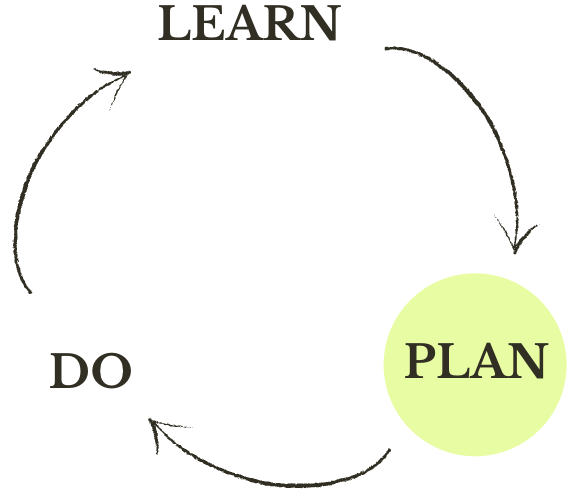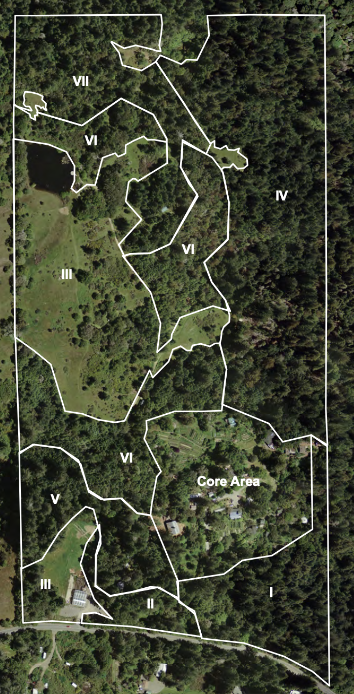PLAN
DESIGN YOUR STEWARDSHIP PLAN
A stewardship plan pulls together into one document your existing conditions, land stewardship goals, actions in the form of Practices, and a timeline.
Even if you hire experienced professionals for planning and implementation (see Resources), it is constructive to understand the logic behind the planning process to ensure you can actively participate in critical decisions.

Phasing and chunking: Land stewardship never ends, so your plan should lay out phases of work that will take place over several years, accounting for seasonal restrictions of certain practices and maintenance needs. Consider how to take manageable bites: whether it’s better in your situation to do all relevant practices in a location or locations (“chunking”) or to implement one or two practices over a larger area (“one layer of the onion at a time”). How to approach the work is often defined by access to Funding and needs for Permitting, so it is best to design your plan with these in mind.
Below are some example plans to work from. You’ll find that previous pages of this guide have already helped you think through the first several sections of a plan. The examples below are detailed, which is important if you’re seeking public funding and permits. You may only need a simple plan. Consider using section headings like those in the examples to ensure you cover all the critical elements.
- Example plan that emphasizes long-term ecological function: Wildlands Preserve Stewardship Plan
- Planning guides focused on forested sites:
- A great plan that supports both timber harvesting and non-timber vegetation management
- RCD Landsmart Forest Management Plan Template
Resources for Implementing offers links to planning tools, mapping tools, potential planning and funding partners, and funding sources.
Remember that most plans will require you to cut some amount of woody material, and your plan needs to include methods for managing that material across different locations within the site. Get help making those decisions.

Management units created by Occidental Arts & Ecology Center to target stewardship practices based on vegetation community and land condition. From their Wildlands Stewardship Plan.
Here’s an example of elements in a stewardship plan that minimizes impacts and permit requirements:
-
- Retain and limb up mature native trees
- Retain selected snags, remove hazardous snags
- Remove dense thickets of small stems
- Mark and protect healthy shrubs that provide food and habitat
- Thin suppressed trees
- Implement strategic Lop & Scatter & Pile Burning in less accessible areas
- Implement strategic Lop and Scatter & Chipping along road
- Remove invasive species by hand
- Avoid bird nesting period. If working during nesting period, conduct nesting surveys
- Avoid treatments in stream, wetlands, or riparian areas
- Conduct archaeological survey and follow mitigation protocols
- Avoid treatments on steep slopes
- Avoid heavy equipment on wet soils
- Repair drainage on roads and trails
- Install wildlife friendly fences
- Consult professional for expertise and experience
- Collaborate with neighbors and groups
- Learn how to prepare for eventual Beneficial Fire
- Estimate project costs and funding
- Determine permitting approvals and the potential to streamline by avoiding impacts
- Schedule process over multiple years
- Identify workforce


